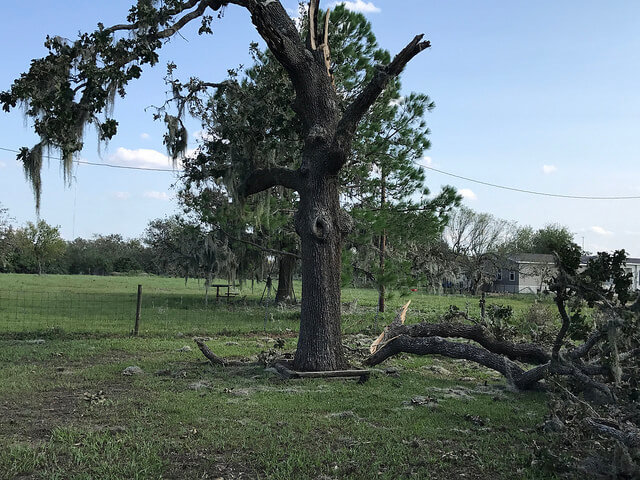How to Keep Neighborhood Trees Healthy and Resilient in the Aftermath of Hurricanes
Hurricanes Harvey and Irma have been taking down countless trees in Texas, Florida, and all the states between them along the Gulf of Mexico. In the aftermath of severe storms like these, trees can get lots of attention and are pointed to as the cause of loss of power and damage to property. However, while some trees do come down in high wind and extreme weather events, the majority of healthy trees survive severe storms, buffer the high winds as the storms come ashore, absorb excess rainfall, and reduce localized flooding.
In the wake of these major storms, it is extremely important to remember that moving storm debris, limbs, and downed trees over long distances can inadvertently spread tree-killing insects to new places. Many areas affected by Hurricane Harvey and Irma are under quarantines that specifically prohibit the long-distance movement of tree-based storm debris (including debris that has been cut into pieces of firewood). These quarantines will depend on exact location, and may include restrictions in place for emerald ash borer, imported fire ants, giant african land snail, and citrus greening (Huanglongbing). The southeastern USA also has widespread infestations of laurel wilt, which is not under federal quarantine but can be transported on storm debris as well.
Storm debris from downed trees and branches should be disposed of using one of the following safer ways: brought to a local solid waste facility (i.e. landfill), brought to a licensed city composting facility, brought to a registered storm debris disposal yard (sometimes called a marshalling yard or area), or used on site for personal firewood. Consult local newspapers and storm information to find out which of the disposal options is best in your area as you get ready to clean up your property.

Tree damaged by Hurricane Harvey in Texas 2017: Flickr user Welscor, Creative Commons License
For future storm safety, it is especially important to remember that trees planted near homes and roads need to be properly pruned to minimize potential damage and failure, especially near power lines. When planting new trees, it is helpful to select a species that will not grow too tall and interfere with power lines to minimize future damage. As cities look to replant choosing the right tree and putting the right tree in the right place will create a more sustainable—and storm resistant—landscape for years to come.
Despite the damage trees can cause in extreme weather events, healthy trees in urban and suburban areas are important for a safer and cleaner urban infrastructure. Trees provide the many benefits to both people and wildlife in city settings:
- Improving water quality by minimizing erosion, slowing the flow of precipitation, and minimizing flooding during heavy rain events
- Mitigating climate change by removing carbon dioxide from the air, regulating local climate by lowering daily temperature variation, and reducing energy expenditure on heating and cooling
- Providing shade and improving local air quality by removing air pollutants and producing oxygen
- Creating valuable habitat for wildlife, and shade and a natural environment for city residents
For more information, we recommend visiting:
- The Right Tree in the Right Place information page, by the Arbor Day Foundation
- Firewood Regulation and Recommendation Summaries Map
This blog is based on our popular 2012 blog, The Importance of Trees in Hurricane Sandy



